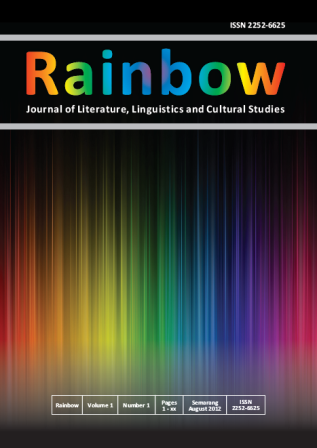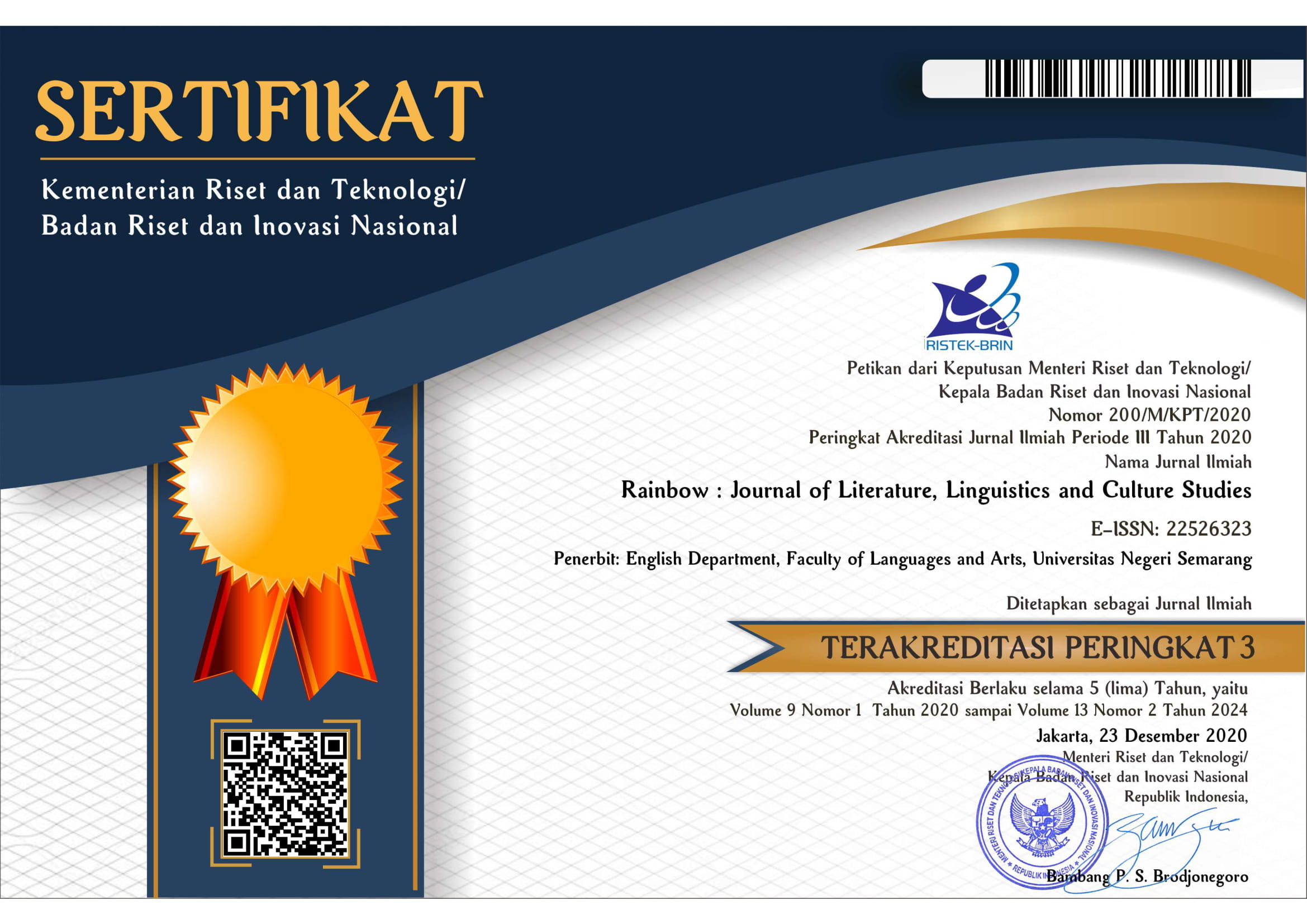SYNTACTIC ANALYSIS OF MARK TWAIN’S ABOUT BARBERS ON LEECH’S METHOD
Abstract
This final project discusses the syntactic analysis of Mark Twain’s About Barbers on Leech’s Method which focusses on its sentence structure and sentence construction. The problems in this study are: how every sentence of Mark Twain’s About Barbers is analyzed syntactically, what the types of sentence structures are used in About Barbers story, what the most dominant type of sentence structures is used in About Barbers story. The objectives of the study are to have a closer look to the elements of syntactical units, to construct of the sentences of About Barbers story, to show and to explain types of the sentence structures used in About Barbers story, to reckon the frequency of types of sentence structures found in About Barbers story and their degree in percent. The sources of the data in this study are the script of the short story. The data taken from the script are in the forms of phrases, sentences, and dialogues. In collecting the data, I used some steps like reading, identifying, inventorying, classifying, and reporting. In analyzing the data, I identified every sentence by parsing analysis with labelling and then counted the percentage of every sentence to get information the most dominant of sentence structure types used in the story. The result shows that compound sentence structure dominates the short story with the amount of frequency 24 in number. Then, compound-complex sentence structure follows it with 16 sentences. The percentage of simple sentence structure is 15%. Complex sentence structure are 18%. Compound-complex sentence is 27% and the last compound sentence structure is 40%. With regards to the previous results, it can be concluded that this text is dominated by compound sentences. Compound sentence contains more than one meaning to be interpreted, so it is a little bit complicated to catch the meaning for English young learners. The result of this study will help students in understanding the compositions of sentences and how the sentence constructed. Besides, it can help English teachers to consider if this work is understandable or suitable for the students.References
Crystal, David. 1987. Stylistic Identity and Literature in the Cambridge Encyclopedia of Language. New York: Cambridge University.
Frank, M. 1972. Modern English: A Practical Reference Guide. New Jersey: Prectice-Hall Inc.
Freeborn, D. 1996. Style: Text Analysis and Linguistic Criticism. Great Britain: Anathong Rowe Ltd.
Gerot, L and P. Wignell. 1995. Making Sense of Functional Grammar. Australia: Great Stable AEE.
Hornby. 1995. Oxford Advanced Learner’s Dictionary. Oxford: University Press.
Leech, Deuchar, and Hoogenraad. 1982. English Grammar for Today. London: MacMillan Education Ltd.
Leech, G. and Michael H. Short. 1981. Style in Fiction: A Linguistic Introduction to English Fictional Prose. Newyork: Longman.
Mifflin, Houghton. 1984. Grammar and Composition. USA: Houghton Mifflin Company.
Soelistia, Prof. 2007. Handout of Style and Structure Literature. Universitas Negeri Semarang.







